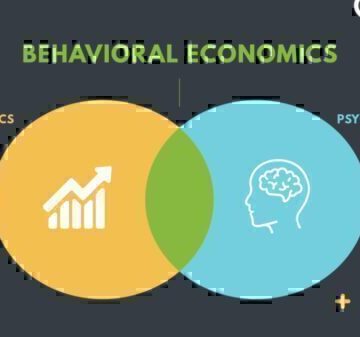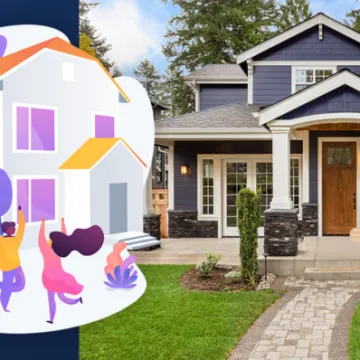Rising interest rates cost consumers money out of their pockets each month. Credit card debt can be a challenge to manage, even in the best of times. Now, with the economy in the news almost every day, how do you effectively manage your debt?
The current financial situation due to inflation, coupled with the ongoing recovery from the pandemic have some people relying on credit to make ends meet. While not ideal, rising interest rates impact not only trips to the store, but can also affect what you have to pay on debts you owe.
There are historic increases in inflation and federal funds rates. That makes borrowing money more expensive and the costs of carrying balances on high interest credit card debt more of a burden – potentially adding to your overall concerns about money.
If you have credit card debt, now is the time to create a plan to pay it down as soon as possible.
In the past weeks rate rises have continued, costing consumers even more, impacting their budgets and what they have to pay out each month.
GreenPath Financial Service
Free Debt Counseling
Take control of your finances, get tailored guidance and a hassle-free budgeting experience. GreenPath offers personalized advice on how to manage your money.
What is the impact on my budget as credit card interest rates rise?
Understanding and managing credit card debt is very important. If you are able to be responsible with the amount of debt creditors extend to you, the better position you will be in for your overall finances. Many people only think of available credit as something to be spent as soon as possible. With the freedom of credit comes a huge responsibility. A change in mentality can put you on a more solid financial footing. Debt payoff needs to be the goal instead of debt accumulation.
A rise in interest rates may increase what you pay in interest. The result is it may take you longer to pay off your credit debt. As with all of your debt, you should regularly review your balances, terms, and interest rates. By staying on top of this vital information, you can make adjustments and informed decisions about attacking any existing balances more aggressively. High interest credit card debt can seem crippling and needs to be addressed proactively, with a plan.
As you are able, consider working to pay off your credit card balance by the due date each month. You can avoid interest charges on what you purchase, which means rising interest rates may not have much of an effect on your household finances.
When should I seek advice to manage debt?
There may be times when you need some additional help to manage everything going on financially. If you are struggling to make payments on your credit cards or other bills and are looking for debt management advice, you may want to consider credit counseling with a qualified non-profit like GreenPath. Staying current on your bills can sometimes be overwhelming, especially as expenses on basic necessities are going up as fast as they are currently.
You don’t necessarily have to sign up for a debt management plan. GreenPath offers free credit counseling and debt counseling to provide some relief from financial stress. You can address your financial concerns, and develop a plan for debt payoff, saving, and building a financially solid future.
You can get debt management advice and take control of your credit card debt. As credit card rates rise, you don’t have to be overwhelmed, there is help available.
What kinds of debts can a debt management plan help with?
Most unsecured debts can be added into a debt management plan. Debt like credit cards, bank loans, store credit balances, and cash and payday loans. Nearly any other unsecured debts you have can be included.
The type of accounts that can be included in a debt management program are:
- Conventional credit cards – Examples include: MasterCard, Visa, or American Express
- Bank issued cards – Examples include: Chase, Citibank, Credit One, Bank of America, or Capital One
- Cards issued by credit unions – Examples include: First Tech, Penfed, Alliant, or Navy Federal
- Retail or airline cards – Examples include: Sam’s Club, Delta Airlines, United Airlines, Amazon, Target, Southwest Airlines, and
- Gas credit cards – Examples include: BP, Shell, Sunoco, and Exxon-Mobil
It’s important to remember that any of your creditors issuing you a credit card can decide not to participate in your debt management plan. It is up to them. If you decide to sign up for a debt management plan, make sure the entity you partner with contacts your creditors for their approval. Going through a debt management plan can put you on the road to improving your credit score and what potential lenders see when they pull your credit report.
- Here are some of the other debts that could be included in your debt management program:Unsecured personal loans
- Unsecured consolidation loans
- Past-due utilities
- Medical debt
Payment Strategies – Snowball and Debt Avalanche
Paying off debt can be challenging, especially if you owe a lot of money to multiple companies and regularly only pay the minimum amount due each month. To free yourself from a large debt burden, you will have to accelerate payments.
There are two popular methods you can employ to knock out your outstanding debt – the debt Snowball Method and the Debt Avalanche Method. Each one aggressively attacks what you owe, but in slightly different ways.
Both methods can be used on most consumer debt like personal, student, and auto loans; credit card balances; and medical bills. However, they do not work with mortgage repayments.
With both the Snowball Method and the Avalanche Method, you start by making minimum payments on all but one of your unsecured debts. Once that is paid off, you focus on another balance, until you have paid off all of your debts.
The difference between the two is with the Debt Avalanche Method, you attack the debt with the highest interest rate. With the Debt Snowball Method, you pay off your smallest debt first and then work to pay off the next largest, and so on, regardless of the interest rate.
Both are effective strategies to eliminate unsecured debt and begin to rebuild your credit report. With each one, you will have to stay disciplined and focused to reach your goal.
Debt Snowball Pros and Cons
Pros: The debt snowball strategy can be attractive because it gives you quick wins – you can see some results sooner rather than later. Some people benefit from seeing their list of debts decrease. That sense of accomplishment can give them the boost they need to stay on track.
Cons: A drawback of the debt snowball method is you could end up paying more interest over time. Of course, that means your debt repayment could be extended due to you owing more money.
Debt Avalanche Pros and Cons
Pros: Some people prefer this method over the debt snowball because it saves more money in the long run. By attacking the highest interest rate first, you pay less interest over time.
Cons: A challenge of paying down the highest interest rate first is that it’s likely the debt with the highest balance. For some people, they get discouraged when they don’t see progress being made faster.
What a Debt Management Program is and how can it help those struggling with debt
If you are having issues with your finances and looking for debt management advice, consider contacting a professional who has tools to help and can put you on the right path. A debt management plan helps eliminate credit card debt faster by bringing accounts current, possibly lowering interest rates and waiving late and over the limit fees. Money is deposited directly to an agency, like GreenPath and then payments are made on your behalf to your creditors. While enrolled in the plan, you make one affordable monthly deposit and your creditors are paid regularly.
The process begins with a free call and a personalized assessment of your financial situation. A certified counselor will work with you, asking questions and getting a clear picture of where you are. The counseling and assessment will help you discover ways you can potentially streamline and reduce expenses. This can also include creating a budget and a real action plan to help you reach your financial goals.
The good news is typically collection calls and letters stop after a few months on the program, successfully meeting your agreement.
GreenPath Financial Service
Debt Management Program
GreenPath is a 60-year trusted national nonprofit, learn how GreenPath’s Debt Management Program can help you pay off your debt in 3-5 years, while helping you develop sound financial literacy.
GreenPath Financial Wellness Success Stories
Read about the following people who were concerned about rising interest rates and wanted to eliminate high-interest credit card debt.
They wrote their own success stories after teaming with GreenPath Financial Wellness. They received personalized debt management advice from caring counselors, regardless of their financial situation.
1. Matthew and Kendall – They reached out to GreenPath to manage credit card debt, past due medical debt and other debt of $8,967 that was already with a debt collections agency. They were struggling, trying to manage their monthly expenses, on top of more than $11,000 in high interest credit card debt. Both had low credit scores and poor credit history.
Working with GreenPath, Matthew and Kendall saved about $5,000 in interest charges, started the process of improving their credit report, and paid off their high-interest credit card debt. In all they paid off more than $20,000 in combined debt.
2. Lavell – Before contacting GreenPath, he had $49,572 in outstanding credit card debt. He had maxed out five consumer credit cards and most of his monthly income was going to debt payoff, instead of being able to build for his future. One of his co-workers suggested reaching out to GreenPath to get a handle on his debt.
While on his Debt Management Plan, Lavell paid off the $49,572 in credit card debt. He was able to lower his credit card interest rates from 24-percent down to 8-percent, saving about $22,600 in interest charges through the GreenPath Debt Management Plan versus paying only the minimum payments by himself.
Before contacting GreenPath, he had $49,572 in outstanding credit card debt. He had maxed out five consumer credit cards and most of his monthly income was going to debt payoff, instead of being able to build for his future. One of his co-workers suggested reaching out to GreenPath to get a handle on his debt.
While on his Debt Management Plan, Lavell paid off the $49,572 in credit card debt. He was able to lower his credit card interest rates from 24-percent down to 8-percent, saving about $22,600 in interest charges through the GreenPath Debt Management Plan versus paying only the minimum payments by himself.
3. Tammy – and her family were overwhelmed with $49,000 in outstanding credit card debt. They didn’t have a clear picture of their total debt, They were having issues trying to keep up with monthly household expenses, as well as credit card balances. She and her husband contacted GreenPath to find out what options they had to get on top of their debt.
Through a debt management plan, debt payoff became a reality. They were able to eliminate $49,000 in credit card debt in 51 months and saved about $70,000 in interest charges.










